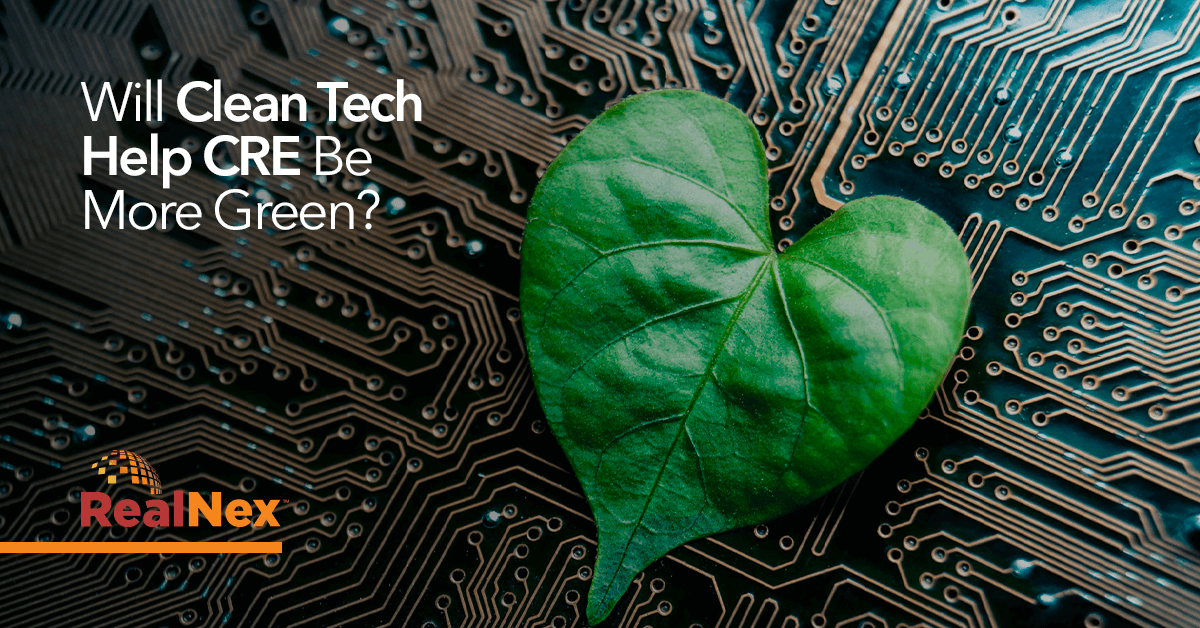This post originally appeared on tBL Marketplace Partner’s, RealNex blog RealNex Media Center Blog and is republished with permission. Find out how to syndicate your content with theBrokerList.
As energy-efficient real estate rating systems are prompting property owners and investors to develop with sustainability in mind, technology is helping the industry achieve its net-zero goals.
Specifically, clean technologies are helping commercial real estate buildings become more sustainable by reducing the carbon footprints of individual buildings through limited energy usage.
What Is Clean Technology?
In CRE, clean technology is a tech-powered system that reduces the negative environmental impacts of the operations of a building. Clean technologies give commercial properties the infrastructure to make trackable green improvements to a building’s operations.
Clean technologies mainly reduce a building’s wasted resources, such as power and water, and introduce renewable power systems that balance the asset’s consumed energy from the grid.
Here are some examples of clean technologies and how they are working to make CRE more sustainable from JLL’s recent coverage on the topic.
#1. Automation-Driven HVAC Systems Cut Waste
According to JLL, a building’s HVAC system can be one of the most wasteful aspects of daily operations. The clean technology that is combatting this sustainability issue is AI-powered asset management systems.
These AI-driven solutions are using property-wide sensors to monitor the building’s occupancy in real-time and employ strategic responses to reduce waste. Not only does this optimize the asset’s allocation of resources, but it also automates a process that otherwise would require a team member’s time. With AI, the HVAC system is being used according to the occupancy needs and automatically adjusted throughout the day.
#2. Energy Storage Systems Support Net-Zero Goals
The way that a property is able to store its energy is one of the biggest focal points for making significant progress toward net-zero goals.
Commercial real estate is using sustainable energy storage systems that leverage renewable energy generation tools. According to JLL, this process stabilizes local energy grids while reducing the cost required to power a building. Companies are using alternative energy sources, such as solar and wind, to create a dynamic distributed energy storage model that feeds energy back into the grid.
This balances the amount of energy the asset consumes, supporting the property in reducing its carbon footprint.
#3. Smart Sensors Track Occupancy
The same AI-driven operations tools that are enabling automated HVAC usage are also being developed to control a building’s lighting, heating, and cooling systems.
By tracking a property’s occupancy in real-time, the entire energy system can be managed remotely to cut back on waste. The lights and temperature systems can be turned off when the area is vacant and automatically turned on when the sensors detect occupants.
These sensors are also equipped with tools that alert management and maintenance teams about property issues before they occur. This preventative maintenance model reduces the loss of resources and time associated with a broken system, such as a downed elevator or potential fire.
These green technologies are driving improvements for CRE’s sustainability on both an individual asset and portfolio-wide level. The expansion of green technologies is transforming the way that buildings operate and is set to help make the industry greener.
For more commercial real estate trends and insights, explore the RealNex Blog.
![]()



